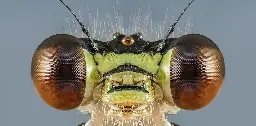
- phys.org A concentrated beam of particles and photons could push us to Proxima Centauri
Getting to Proxima Centauri b will take a lot of new technologies, but there are increasingly exciting reasons to do so. Both public and private efforts have started seriously looking at ways to make it happen, but so far, there has been one significant roadblock to the journey—propulsion.
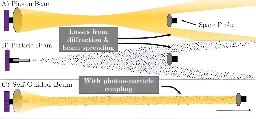
Getting to Proxima Centauri b will take a lot of new technologies, but there are increasingly exciting reasons to do so. Both public and private efforts have started seriously looking at ways to make it happen, but so far, there has been one significant roadblock to the journey—propulsion.
To solve that problem, Christopher Limbach, now a professor at the University of Michigan, is working on a novel type of beamed propulsion that utilizes both a particle beam and a laser to overcome that technology's biggest weakness.
According to their calculations, a 5g probe like the one that the Breakthrough Initiatives project is working on could be pushed up to 10% of the speed of light, allowing it to reach Proxima b in 43 years.
Alternatively, they also calculated that a much larger probe of around 1kg could reach the system in around 57 years. That would allow for a much more exciting payload, even if the probe would zoom through the Proxima Centauri system at a significant fraction of the speed of light.
- www.universetoday.com Basketball-Sized Meteorites Strike the Surface of Mars Every Day
How often does Mars suffer from hypervelocity impacts that create 100 meter craters? Data from NASA's InSight lander has the answer.
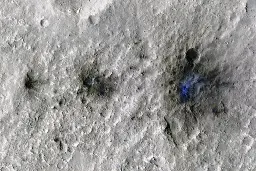
If you want to live on Mars, watch your head; it's raining space rocks. Researchers studying seismic data from NASA's Mars Insight mission estimate that 280 to 360 meteorites strike the surface of Mars, making a new crataer. This new estimate is about five times larger than predicted by previous estimates that used orbital imagery. On average, an 8-meter crater is created once a day, and a 30-meter crater is created about once a month.
During about three years of recording time, InSight and SEIS detected 70 VF events. 59 of them had good distance estimates, and according to the researchers, a handful of them were “higher quality B VF events,” meaning their signal-to-noise ratios are strong. “Although a non-impact origin cannot be definitively excluded for each VF event, we show that the VF class as a whole is plausibly caused by meteorite impacts,” the authors explain in their paper.
This led to a new estimate of Mars’s impact frequencies. The researchers say that between 280 and 360 meteoroids about the size of basketballs strike Mars each year and excavate craters greater than 8 meters (26 ft) in diameter. That’s almost one every day at the upper end. “This rate was about five times higher than the number estimated from orbital imagery alone. Aligned with orbital imagery, our findings demonstrate that seismology is an excellent tool for measuring impact rates,” Zenhäusern said in a press release.
Impact rates on different bodies in the Solar System are one way of understanding the age of their surfaces. Earth’s surface is young because the planet is so geologically active. Earth is also much easier to study in greater detail, for obvious reasons. But for bodies like the Moon and Mars, impact rates can tell us the ages of various surfaces, leading to a more thorough understanding of their history.
Orbital images and models based on preserved lunar craters have been the main tools used by planetary scientists to infer impact rates. The data from the Moon was used to extrapolate Mars’ impact rate. But there are problems with that method. Mars has more powerful gravity and is closer to the source of most meteors, the asteroid belt.
That means more meteoroids strike Mars than the Moon, and that had to be calculated somehow. Conversely, Mars has widespread dust storms that can obscure craters in orbital images, while the lunar surface is largely static. Mars also has different types of surface regions. In some regions, craters stand out; in others, they don’t. Trying to accurately account for that many differences when extrapolating impact rates from the Moon to Mars is challenging.
This work shows that seismometers can be a more reliable way to understand impact rates.
- phys.org Treasures beneath the ocean floor? Seawater plays role in gold formation
Understanding how gold forms is crucial for knowing where to find it and how to extract it sustainably. McGill researchers have answered a long-standing question in geology that could lead to new ore discoveries.

Understanding how gold forms is crucial for knowing where to find it and how to extract it sustainably.
The deposit, now on land due to plate tectonic processes, originally formed in a submarine oceanic island arc about 183 million years ago. After analyzing the samples at McGill and the University of Alberta, they found seawater had mixed with ore fluids in the Earth's crust to form gold.
Clues from soured milk
The findings build on the McGill team's 2021 discovery that gold nanoparticles combine to form high-grade gold deposits, in a process akin to the way proteins clump together to form curds when milk sours.
- www.scientificamerican.com To Follow the Real Early Human Diet, Eat Everything
Nutrition influencers claim we should eat meat-heavy diets like our ancestors did. But our ancestors didn’t actually eat that way

Fossils of the earliest known hominins indicate that they walked upright on two legs but still spent a lot of time in trees. They don’t appear to have made stone tools and probably subsisted on a diet similar to that of chimpanzees and bonobos, our closest living relatives—which is to say mostly fruits, nuts, seeds, roots, flowers and leaves, along with insects and the occasional small mammal.
For the entire first half of our known history, hominins seem to have maintained this plant-based diet—they left no material trace of meat eating. It’s not until nearly three million years after our lineage got its start that there’s any evidence that they exploited large animals for food.
The oldest possible evidence of meat eating by hominins comes from Dikika, Ethiopia. There researchers found fragments of bone from goat- and cow-size mammals bearing marks suggestive of butchery that occurred at least 3.39 million years ago.
The butcher, in this case, was probably Australopithecus afarensis, the small-brained, small-bodied hominin species to which the famous Lucy fossil belongs—the only hominin species known from this time and place. Although no tools were discovered, based on the pattern of damage to the bones, the researchers concluded that A. afarensis used sharp-edged stones to strip flesh from the bones and struck the bones with blunt stones to access the marrow inside.
- www.nasa.gov NASA, Partners Conduct Fifth Asteroid Impact Exercise, Release Summary - NASA
For the benefit of all, NASA released a summary Thursday of the fifth biennial Planetary Defense Interagency Tabletop Exercise. NASA’s Planetary Defense
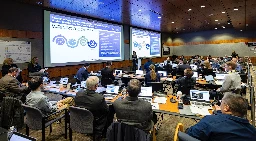
Although there are no known significant asteroid impact threats for the foreseeable future, hypothetical exercises provide valuable insights by exploring the risks, response options, and opportunities for collaboration posed by varying scenarios, from minor regional damage with little warning to potential global catastrophes predicted years or even decades in the future.
To help ensure humanity will have the time needed to evaluate and respond to a potentially hazardous asteroid or comet, NASA continues the development of its NEO Surveyor (Near-Earth Object Surveyor), an infrared space telescope designed specifically to expedite our ability to discover and characterize most of the potentially hazardous near-Earth objects many years before they could become an impact threat. The agency’s NEO Surveyor’s proposed launch date is set for June 2028.
- www.nature.com Narrative cave art in Indonesia by 51,200 years ago - Nature
A cave art scene at Leang Karampuang, Indonesia, dated to at least 51,200 years ago using laser-ablation uranium-series imaging, depicts human-like figures interacting with a pig.

Previous dating research indicated that the Indonesian island of Sulawesi is host to some of the oldest known rock art1,2,3. That work was based on solution uranium-series (U-series) analysis of calcite deposits overlying rock art in the limestone caves of Maros-Pangkep, South Sulawesi.
Here we use a novel application of this approach—laser-ablation U-series imaging—to re-date some of the earliest cave art in this karst area and to determine the age of stylistically similar motifs at other Maros-Pangkep sites.
Painted at least 51,200 years ago, this narrative composition, which depicts human-like figures interacting with a pig, is now the earliest known surviving example of representational art, and visual storytelling, in the world.
Our findings show that figurative portrayals of anthropomorphic figures and animals have a deeper origin in the history of modern human (Homo sapiens) image-making than recognized to date, as does their representation in composed scenes.
- www.nature.com Middle and Late Pleistocene Denisovan subsistence at Baishiya Karst Cave - Nature
Zooarchaeological and proteomic analyses of bones from Baishiya Karst Cave on the Tibetan Plateau identify a hominin rib specimen, and provide insight into the ways Denisovans interacted with their surrounding environment and made use of animal resources.

Genetic and fragmented palaeoanthropological data suggest that Denisovans were once widely distributed across eastern Eurasia
Using zooarchaeology by mass spectrometry, we identify a new hominin rib specimen that dates to approximately 48–32 thousand years ago (layer 3). Shotgun proteomic analysis taxonomically assigns this specimen to the Denisovan lineage, extending their presence at Baishiya Karst Cave well into the Late Pleistocene.
The chaîne opératoire of carcass processing indicates that animal taxa were exploited for their meat, marrow and hides, while bone was also used as raw material for the production of tools. Our results shed light on the behaviour of Denisovans and their adaptations to the diverse and fluctuating environments of the late Middle and Late Pleistocene of eastern Eurasia.
- phys.org Ants perform amputations to save injured nestmates
Saving lives through surgery is no longer exclusive to humans. In a study published July 2 in the journal Current Biology, scientists detail how Florida carpenter ants, a common, brown species native to its namesake, selectively treat the wounded limbs of fellow nestmates—either by wound cleaning or...

Saving lives through surgery is no longer exclusive to humans. In a study published July 2 in the journal Current Biology, scientists detail how Florida carpenter ants, a common, brown species native to its namesake, selectively treat the wounded limbs of fellow nestmates—either by wound cleaning or amputation.
When experimentally testing the effectiveness of these "treatments," not only did they aid in recovery, but the research team found the ants' choice of care catered to the type of injury presented to them.
When we're talking about amputation behavior, this is literally the only case in which a sophisticated and systematic amputation of an individual by another member of its species occurs in the animal Kingdom.
- phys.org The evidence is mounting: Humans were responsible for the extinction of large mammals
The debate has raged for decades: Was it humans or climate change that led to the extinction of many species of large mammals, birds, and reptiles that have disappeared from Earth over the past 50,000 years?
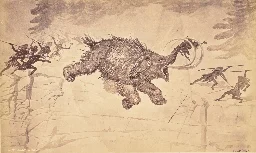
The analysis shows that human hunting of large animals such as mammoths, mastodons, and giant sloths was widespread and consistent across the world.
It also shows that the species went extinct at very different times and at different rates around the world. In some local areas, it happened quite quickly, while in other places it took over 10,000 years. But everywhere, it occurred after modern humans arrived, or in Africa's case, after cultural advancements among humans.
Species went extinct on all continents except Antarctica and in all types of ecosystems, from tropical forests and savannas to Mediterranean and temperate forests and steppes to arctic ecosystems.
- www.universetoday.com Take a Look at These Stunning New Exoplanet Infographics
Two new exoplanet infographics from Slovak artist Martin Vargic show almost 1600 different exoplanets in all their glory.

With the help of scientific models and up-to-date information, this poster attempts to artistically visualize together over 1100 known exoplanets of all the different types we have discovered so far, arranged by the amount of heat they receive from their stars, comparing their relative sizes and providing a window to how they might look like.
"Data for both exoplanet infographics was gathered from three public exoplanet databases, The Extrasolar Planet Encyclopaedia, NASA Exoplanet Archive and ExoKyoto,” Vargic explained. The colours of the gas giant exoplanets are based on the Sudarsky Scale. It takes into account the various chemicals and temperatures of planetary atmospheres. Vargic also used existing exoplanet illustrations as a source.
-
From the archives: The ‘Saints and Martyrs’ of Parapsychology
Parapsychology continues to exist as a research area marginally recognised as legitimate, on the fringes of the academic world. In the UK, the first Chair of Parapsychology has been founded at Edinburgh on the money left by the late Arthur Koestler, but we should remember that a Chair in Phrenology was once established at Glasgow University.
In parapsychology there are, and have always been, those who are dedicated to faking. In one sense one must respect them more than those who merely capitalise on their dedicated dishonesty. In the latter category there are those who have not to my knowledge ever published any fraudulent results, because they have never claimed any ‘positive’ results at all. Instead they have pursued the more comfortable course of retaining their formal integrity whilst celebrating the outrageous miracles of those like Eusapia Palladino who may have done their cheating for them.
These respectable, and some might say cunning, celebrants of other people’s cheating are not saints and martyrs; they have determined on a course wherein they have their cake and eat it. No one can accuse them of being cheats and liars: at worst they can be publicly accused of being naive, trusting souls, but perhaps their naivete is more apparent than real. But the saints of parapsychology have sacrificed much so that others may exploit their sacrifice. They have laid upon the altar their own personal integrity.
-
The extremotolerant desert moss Syntrichia caninervis is a promising pioneer plant for colonizing extraterrestrial environments
Public summary
•Extreme desiccation tolerance: recover within seconds after >98% water loss.
•Extraordinary freezing tolerance: withstand −196°C ultra-low temperature.
•Super resistance to gamma radiation: with half-lethal dose estimated to be 5,000 Gy.
•This desert moss can survive and maintain vitality in simulated Mars conditions.
•The extremotolerant moss is a promising pioneer for Mars colonization.
Many plans to establish human settlements on other planets focus on adapting crops to growth in controlled environments.
However, these settlements will also require pioneer plants that can grow in the soils and harsh conditions found in extraterrestrial environments, such as those on Mars.
Here, we report the extraordinary environmental resilience of Syntrichia caninervis, a desert moss that thrives in various extreme environments. S. caninervis has remarkable desiccation tolerance; even after losing >98% of its cellular water content, it can recover photosynthetic and physiological activities within seconds after rehydration.
Intact plants can tolerate ultra-low temperatures and regenerate even after being stored in a freezer at −80°C for 5 years or in liquid nitrogen for 1 month.
S. caninervis also has super-resistance to gamma irradiation and can survive and maintain vitality in simulated Mars conditions; i.e., when simultaneously exposed to an anoxic atmosphere, extreme desiccation, low temperatures, and intense UV radiation.
Our study shows that S. caninervis is among the most stress tolerant organisms.
- observer.com Why the Legend of the Montauk Monster Will Never Die
Like David Duchovny’s Fox Mulder, we just want to believe.

“It looked like nothing I’d ever seen before,” Ryan O’Shea told Newsday reporter Joye Brown. “It looked like it died angry… I kept thinking, ‘Boy, I hope its mother isn’t around.’” He was referring, of course, to the Montauk Monster, a house cat-sized… something that washed up on the shore of Ditch Plains, a popular Long Island surfing beach, in July of 2008. Most people who encountered the story—i.e., just about everyone—agreed it was an animal, though some floated the idea that it could be a marketing stunt for the Cartoon Network’s Cryptids Are Real. What no one could agree on was what kind of animal. Or even if it hit the beach dead or alive.
In the same Newsday piece, one Ryan Kelso reported seeing it up and about, roaming the dunes. “It looked about the size of an average fox, gray in color, eyes like a mole, hairless and was breathing quite heavily,” he told Brown.
Cue the conspiracy theorists. Montauk, they say, is a magnet for monsters thanks to both the top-secret Montauk Project, with its psychically-generated Bigfoot, and the village’s proximity to Plum Island, the one-time home of the Plum Island Animal Disease Center. There, the credulous maintain, government researchers not only invented Lyme disease and accidentally released it into Connecticut but also created hundreds of mutant hybrids as part of a cross-species breeding program.
Some of these creatures naturally escaped their cages and swam for the mainland, coming ashore in Montauk (as with 2008’s Montauk Monster and the lesser-known 2020 Montauk Globster) or possibly much further down the coast. There have been, some will recall, several East River Monsters along with the monster of Wolfe’s Pond Park in Prince’s Bay on Staten Island.
- www.universetoday.com Asteroid Samples Were Once Part of a Wetter World
Some of the first science results from the Bennu sample are in. They indicate that Bennu may have had a watery past.
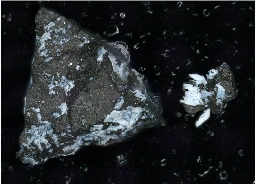
NASA's OSIRIS-REx mission delivered samples of the asteroid Bennu to researchers on Earth, providing a look at pristine materials that formed early on in the Solar System's history.
Researchers have discovered that the samples are unaltered and haven't melted and resolidified since their formation.
One surprising discovery is that the samples mirror the rock found at Earth's mid-ocean ridges, suggesting they encountered water for long periods.
-
Evidence shows US is hiding knowledge of alien life

YouTube Video
Click to view this content.
Ross Coulthart | Morning in America
- www.esa.int New images of rare thunder
ESA astronaut Andreas Mogensen has captured images of rare thunder phenomena as part of the Thor-Davis experiment on his Huginn mission.
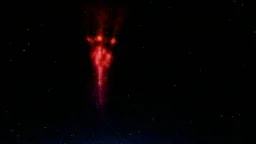
ESA astronaut Andreas Mogensen has captured images of rare thunder phenomena as part of the Thor-Davis experiment on his Huginn mission.
Andreas managed to capture a red sprite, a thunderous phenomenon called Transient Luminous Event (TLE), that takes place above thunderclouds, between 40 and 80 kilometres over the ground.
From the image and the video, he captured, scientists estimate that the size of the red sprite is roughly 14 by 26 km.
As the red sprites form above thunder clouds, they are not easily studied from ground and are therefore mostly seen from space, including using the Atmosphere-Space Interactions Monitor (ASIM) that sits on the outside of the Space Station.
However few sprites have been seen from the ground.
- apod.nasa.gov APOD: 2024 July 1 – Time Spiral
A different astronomy and space science related image is featured each day, along with a brief explanation.
Time Spiral
Explanation: What's happened since the universe started?
The time spiral shown here features a few notable highlights.
At the spiral's center is the Big Bang, the place where time, as we know it, began about 13.8 billion years ago.
Within a few billion years atoms formed, then stars formed from atoms, galaxies formed from stars and gas, our Sun formed, soon followed by our Earth, about 4.6 billion years ago.
Life on Earth begins about 3.8 billion years ago, followed by cells, then photosynthesis within a billion years. About 1.7 billion years ago, multicellular life on Earth began to flourish. Fish began to swim about 500 million years ago, and mammals because walking on land about 200 million years ago. Humans first appeared only about 6 million years ago, and made the first cities only about 10,000 years ago.
The time spiral illustrated stops there, but human spaceflight might be added, which started only 75 years ago, and useful artificial intelligence began to take hold within only the past few years.
-
Paleolithic eyed needles and the evolution of dress
Eyed needles are among the most iconic of Paleolithic artifacts, traditionally seen as rare indicators of prehistoric clothing, particularly tailoring. However, recent finds across Africa and Eurasia show that other technologies like bone awls also facilitated the creation of fitted garments.
Nonetheless, the advent of delicate eyed needles suggests a demand for more refined, efficient sewing. This refinement may signify two major developments: the emergence of underwear in layered garment assemblages, and/or a transition in adornment from body modification to decorating clothes, as humans covered themselves more completely for thermal protection.
Archaeological evidence for underwear is limited, but the Upper Paleolithic saw an increase in personal ornaments, some sewn onto clothing.
Eyed needles may mark a pivotal shift as clothes acquired the social functions of dress, decoupling clothing from climate and ensuring its enduring presence.
- tribune.com.pk Close aides to Maldivian President arrested for performing alleged 'black magic' on him | The Express Tribune
Two ministers who are charged with using witchcraft against Mohamed Muizzu previously worked with him

Maldives police have arrested two serving ministers for allegedly performing black magic on President Mohamed Muizzu, local media reported on Thursday.
Shamnaz Saleem, the state minister at the Environment Ministry, and her ex-husband Adam Rameez, who was serving as a minister at the President's Office, were taken into custody along with two others.
The police have not disclosed details about the reasons or the alleged performance of black magic.
While sorcery is not a criminal offence under Maldivian law, it does carry a six-month jail sentence under Islamic law.
Traditional ceremonies and beliefs in black magic are widely practiced across the Maldivian archipelago.
However, the current case involving the arrest of two serving ministers for allegedly using witchcraft against the president appears to be unprecedented in the Maldives.
-
We are closer than ever to finding aliens according to astrophysicist Adam Frank. He isn’t alone in his optimism. Over the last two decades, the tools used to search for extraterrestrials have been advancing mightily. Where we were once only monitoring with radio telescopes, we are now actively looking for bio and technosignatures on exoplanets. Find out why scientists think new technology may be a game changer in the hunt for life off Earth.
-
World UFO Day
World UFO Day is an awareness day for people to gather together and watch the skies for unidentified flying objects (UFO). The day is celebrated only on July 2.while July 2 is the date of the supposed UFO crash in the 1947 Roswell incident, July 2 was declared as the official World UFO Day by the World UFO Day Organisation.It is believed that the first World UFO Day was celebrated in 2001 by UFO researcher Haktan Akdogan.
The stated goal of the July 2 celebration is to raise awareness of "the undoubted existence of UFOs" and to encourage governments to declassify their files on UFO sightingsc
World UFO Day is celebrated by stirring conversations about how and why humans are not the only beings in the Universe. The WUFDO (World UFO Day Organisation)promotes various events and educational workshops with the idea of getting people to know about UFOS.
- theconversation.com Lucy, discovered 50 years ago in Ethiopia, stood just 3.5 feet tall − but she still towers over our understanding of human origins
A photo of Lucy’s reconstructed skeleton next to a live four-year-old girl shows how human Lucy was – and how small.

Lucy was a member of the species Australopithecus afarensis, an extinct hominin – a group that includes humans and our fossil relatives. Australopithecus afarensis lived from 3.8 million years ago to 2.9 million years ago, in the region that is now Ethiopia, Kenya and Tanzania. Dated to 3.2 million years ago, Lucy was the oldest and most complete human ancestor ever found at the time of her discovery.
Two features set humans apart from all other primates: big brains and standing and walking on two legs instead of four. Prior to Lucy’s discovery, scientists thought that our large brains must have evolved first, because all known human fossils at the time already had large brains. But Lucy stood on two feet and had a small brain, not much larger than that of a chimpanzee.
-
The child who lived: Down syndrome among Neanderthals?
Caregiving for disabled individuals among Neanderthals has been known for a long time, and there is a debate about the implications of this behavior. Some authors believe that caregiving took place between individuals able to reciprocate the favor, while others argue that caregiving was produced by a feeling of compassion related to other highly adaptive prosocial behaviors. The study of children with severe pathologies is particularly interesting, as children have a very limited possibility to reciprocate the assistance.
We present the case of a Neanderthal child who suffered from a congenital pathology of the inner ear, probably debilitating, and associated with Down syndrome. This child would have required care for at least 6 years, likely necessitating other group members to assist the mother in childcare.
- www.sciencealert.com World First: Scientists Make Live Rhino Horns Radioactive to Fight Poaching in South Africa
South African scientists on Tuesday injected radioactive material into live rhino horns to make them easier to detect at border posts in a pioneering project aimed at curbing poaching.

South African scientists on Tuesday injected radioactive material into live rhino horns to make them easier to detect at border posts in a pioneering project aimed at curbing poaching.
The country is home to a large majority of the world's rhinos and as such is a hotspot for poaching driven by demand from Asia, where horns are used in traditional medicine for their supposed therapeutic effect.
Rhino horns are highly sought after on black markets, where the price by weight rivals that of gold and cocaine.
The material would last five years on the horn, which was cheaper than dehorning every 18 months.
- phys.org Last surviving woolly mammoths were inbred but not doomed to extinction, genomic analysis suggests
The last population of woolly mammoths was isolated on Wrangel Island off the coast of Siberia 10,000 years ago, when sea levels rose and cut the mountainous island off from the mainland.
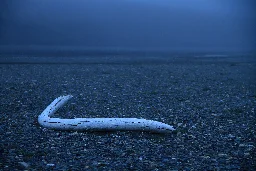
The last population of woolly mammoths was isolated on Wrangel Island off the coast of Siberia 10,000 years ago, when sea levels rose and cut the mountainous island off from the mainland.
A new genomic analysis reveals that the isolated mammoths, who lived on the island for the subsequent 6,000 years, originated from at most eight individuals but grew to 200–300 individuals within 20 generations.
The researchers report June 27 in the journal Cell that the Wrangel Island mammoths' genomes showed signs of inbreeding and low genetic diversity but not to the extent that it can explain their ultimate (and mysterious) extinction.
- bigthink.com The biology of aliens: How much do we know?
Hollywood has created an idea of aliens that doesn't match the science.

Hollywood has created an idea of aliens that doesn’t match the science
-
Perforation-type anchors inspired by skin ligament for robotic face covered with living skin
Highlights
•Perforation-type anchor is proposed to adhere living skin to robotic surfaces
•Proposed anchor mimics human skin ligaments by gelling skin tissue via perforations
•3D facial mold and 2D skin robot covered with living skin are created
This research explores the correlation between the size of perforation-type anchors and anchoring strength. As a demonstration of the tissue fixation, we applied perforation-type anchors to cover the 3D facial mold with a skin equivalent. Finally, a robotic face capable of generating smiling expressions via the perforation-type anchors was developed.
The primary advantage of using skin equivalent as a covering material for robots is its self-healing capability. Unlike other self-healing materials, which require heat or pressure to trigger adhesion at cut surfaces, skin equivalent can regenerate defects through cellular proliferation without any triggers.
- phys.org Lemur communication shows how humans evolved to create music
A type of lemur which communicates in rhythmic song shows how humans have evolved to create music, according to researchers at The University of Warwick.
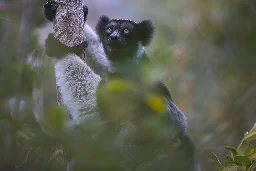
A type of lemur which communicates in rhythmic song shows how humans have evolved to create music, according to researchers at The University of Warwick.
Indris, known as "singing lemurs" live in small family groups in the Madagascan rainforest and communicate using songs, similar to birds and humans. They also use rhythmic vocalizations like alarm calls to alert family members of predators.
Researchers found that Indris have "isochrony" in their communication, which is where the time between sounds or notes are equal, creating a steady occurrence of events at regular intervals, resulting in a consistent rhythm or beat—much like in music. For example, in an isochronous pattern, each note or beat would be evenly spaced apart, like the ticking of a clock.
__________
Isochrony as ancestral condition to call and song in a primate
https://nyaspubs.onlinelibrary.wiley.com/doi/10.1111/nyas.15151
- bigthink.com The mystery of the Moon's two faces could soon be solved
The near and far sides of the Moon are so different from each other, and no one is sure why. New lunar samples could confirm a wild theory.
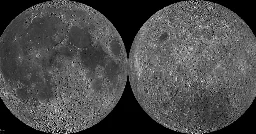
The near and far sides of the Moon are so different from each other, and no one is sure why. New lunar samples could confirm a wild theory.
KEY TAKEAWAYS
Although even our pre-human ancestors were familiar with the near side of the Moon, we didn’t get our first glimpse of the lunar far side until 1959, and wow, is it surprisingly different.
Unlike the near side, it’s practically devoid of lunar maria, and instead is filled with mountainous, high-altitude, heavily cratered highlands. Even in 2024, no one is sure as to why.
However, humanity’s first successful sample return mission from the Moon’s far side, conducted by China’s Chang’e-6, might solve the mystery. A wild theory is about to be put to the test.
And now, from a scientific point of view, the fun truly begins.
What will a sample analysis of the material from the lunar far side show?
Will the samples be identical in composition to the ones previously returned: from the lunar near side?
Will they be different in any appreciable way, such as in terms of the abundance of various elements?
Will they shed any new light on the various formation theories — and details about those theories — for the Moon itself?
And will they be consistent with the stories we tell ourselves about the Moon and Earth today, or will there be some novel information that compels us to rewrite what we thought we already knew?
- newspaceeconomy.ca The ‘Rod of God’: Theoretical Kinetic Energy Weaponry from Space
In the realm of theoretical weaponry, the ‘Rod of God’ is a concept that sparks intrigue and debate amongst military strategists, physicists, and science fiction enthusiasts alike. Its …

The Concept
The idea behind the ‘Rod of God’ is strikingly simple: what goes up must come down. The weapon consists of a pair of satellites, one of which houses a series of tungsten rods, each about 20 feet long and one foot in diameter. These rods would be deployed towards Earth, gaining speed as they descend due to the pull of gravity. By the time they reach the surface, the rods would be traveling at a speed of up to 10 kilometers per second—approximately 30 times the speed of sound.
Upon impact, the kinetic energy of the rods would be released, causing an explosion akin to a nuclear bomb but without the associated fallout or radiation. This could, theoretically, allow for highly targeted, extremely powerful strikes without the geopolitical ramifications associated with the use of nuclear weapons.
-
Viking Nicknames
www.medievalists.net 517 Viking Nicknames - Medievalists.netOf all the peoples of the Middle Ages, it was the Norse who had the best nicknames. You can now explore a list of hundreds of interesting and strange nicknames from the Viking Age.
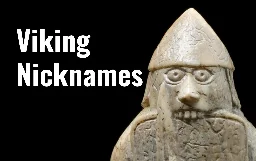
Of all the peoples of the Middle Ages, it was the Norse who had the best nicknames. You can now explore a list of hundreds of interesting and strange nicknames from the Viking Age.
The sagas and histories of the Norse peoples are filled with names – the Family Sagas alone include over 7,000 named individuals. Most of those people also had nicknames. They needed to have them, for Norse society did not use proper surnames, but used patronyms like x’s son or x’s daughter. Without nicknames it would have been very difficult to differentiate people.
One could get their nickname from their age, appearance, clothing, where one came from, their occupation, or some interesting quality about the person. These nicknames could just as easily be an insult as they could be a compliment. We even have nicknames that were sexually explicit – for example, Kolbeinn Butter Penis – or as Peterson describes “potty humor nicknames,” such as Eystein Foul-Fart.
There are cases where people had multiple nicknames – a man named Hroi had five: ‘The Wealthy’, ‘The Foolish’, ‘The Elegant’, ‘The Wise’, and ‘Mishap’. They could also be changed during their lifetime.
-
Artificial Greenhouse Gases as Exoplanet Technosignatures
We propose that certain atmospheric technosignatures do not suffer from this longevity problem.
In contrast to industrial pollutants, artificial greenhouse ("terraforming") gases would represent an intentional effort to modify a planet's climate, and could persist for the entire remaining history of a civilization or beyond.
Terraforming, by definition, requires sufficient modification of the atmosphere to adjust a planet's global energy balance, which correspondingly implies a large spectral signature in the thermal infrared portion of the planet's spectrum, incidentally supporting remote detectability.
Maintaining a terraformed atmosphere may also require the consistent and intentional replenishment of the contributing gases.
Fortuitously, many such gases tend to have long atmospheric residence times of thousands to tens of thousands of years, which would help make the cost of doing so nonprohibitive.
Civilizations may be motivated to introduce highly efficient greenhouse gases to forestall a global ice age on their own home world caused by analogs to Earth's Milankovich cycles.
Alternatively, they may use terraforming gases to make another planet in their home system (or beyond) more suitable for life, as humans have proposed for Mars . For the case of Mars, the idea of mobilizing available CO2 and other volatile inventories as a terraforming strategy appears to be largely infeasible, so the use of additional artificial gases would be needed for an effective terraforming strategy.
-
Some insects have detachable penises, others produce sperm that is 20 times the size of their own body. Others have evolved with special equipment to help them tear rivals off potential mates. Insects can be creepy, promiscuous or murderous – but they are rarely dull.
More disturbing behaviour is seen in the bed bug. Males simply pierce a female’s abdomen then inject sperm through the wound into her abdominal cavity. As insects have an open circulatory system without arteries and veins, the sperm can easily migrate from the abdominal cavity to the ovaries for fertilisation.
Many male insects only get to mate once, even when they aren’t eaten by their partners. For example, male bees ejaculate with such explosive force that it is loud enough for humans to hear. This ensures the sperm is passed to the female, but it results in paralysis of the male, which kills him. So, males need to make the most of their exploits.
- www.smithsonianmag.com A Buried Ancient Egyptian Port Reveals the Hidden Connections Between Distant Civilizations
At the site of Berenike, in the desert sands along the Red Sea, archaeologists are uncovering wondrous new finds that challenge old ideas about the makings of the modern world

At the site of Berenike, in the desert sands along the Red Sea, archaeologists are uncovering wondrous new finds that challenge old ideas about the makings of the modern world
In antiquity, this site, known as Berenike, was described by chroniclers such as Strabo and Pliny the Elder as the Roman Empire’s maritime gateway to the East: a crucial entry point for mind-boggling riches brought across the sea from eastern Africa, southern Arabia, India and beyond. It is hard to imagine how such vast and complex trade could have been supported here, miles from any natural source of drinking water and many days’ arduous trek across mountainous desert from the Nile. Yet excavations are revealing that the stories are true.
Archaeologists led by Steven Sidebotham, of the University of Delaware, have revealed two harbors and scores of houses, shops and shrines. They have uncovered mounds of administrative detritus, including letters, receipts and customs passes, and imported treasures such as ivory, incense, textiles, gems and foodstuffs such as pots of Indian peppercorns, coconuts and rice. The finds are not only painting a uniquely detailed picture of life at a lesser-known but critical crossroads between East and West. They are also focusing scholarly attention on a vast ancient ocean trade that may have dwarfed the terrestrial Silk Road in economic importance and helped sustain the Roman Empire for centuries.
- www.sciencealert.com A Diet of Dark Matter Could Be Making Some Stars Effectively Immortal
In our rapidly expanding Universe, the lives of stars follow well-worn tracks, fusing hydrogen and then helium before swelling in size until they exhaust their nuclear fuels and collapse, no longer able to resist the force of gravity.

In our rapidly expanding Universe, the lives of stars follow well-worn tracks, fusing hydrogen and then helium before swelling in size until they exhaust their nuclear fuels and collapse, no longer able to resist the force of gravity.
But some stars in the innermost region of our Milky Way, very close to the galactic center, might be carving out their own path, exhibiting strange properties that don't fit our standard picture of stellar evolution.
New research suggests these anomalies could be powered mostly by dark matter instead of nuclear fusion – with that dark matter 'replenishing' the stars and making them practically ancient by comparison.
Their model predicts the existence of a new class of heavy stars that are kept 'alight' not just by small amounts of fusion of atomic nuclei, but also by the annihilation of an "effectively infinite" supply of dark matter particles colliding with antimatter.
________ Dark Branches of Immortal Stars at the Galactic Center
-
The authors study the context of the skeletal remains of three individuals and associated sediment samples to conclude that the hominin species Homo naledi intentionally buried their dead.
Some authors have argued that mortuary behavior is unlikely for H. naledi, due to its small brain size . The evidence demonstrates that this complex cultural behavior was not a simple function of brain size.
While we cannot at this time exclude H. naledi as part of the ancestral makeup of humans, its overall morphology suggests that its common ancestors with today’s humans and Neandertals go back a million years or more .
This raises the possibility that burial or other mortuary behavior may have arisen much earlier than present evidence for them, or that such behaviors evolved convergently in minds different from our own.
Understanding such behaviors will require comparative study of all hominin lineages in which they occur.
- newspaceeconomy.ca Top 10 Misconceptions About the Search for Extraterrestrial Intelligence
The search for extraterrestrial intelligence (SETI) has captivated scientists and the public for decades. However, many misconceptions persist about this field of research. This article examines te…
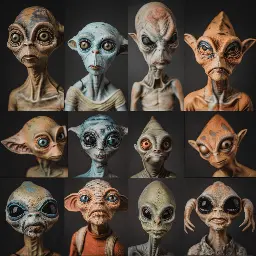
The search for extraterrestrial intelligence (SETI) has captivated scientists and the public for decades. However, many misconceptions persist about this field of research. This article examines ten common misunderstandings about SETI to provide a clearer picture of this fascinating scientific endeavor.
- SETI Only Involves Radio Telescopes
While radio astronomy plays a significant role in SETI, it is not the only method used. Researchers also employ optical telescopes to search for laser signals, analyze exoplanet atmospheres for biosignatures, and explore other potential indicators of technological civilizations.
- SETI Has Been Ongoing for Centuries
Organized SETI efforts began in the mid-20th century. Although humans have long speculated about life beyond Earth, systematic scientific searches are a relatively recent development.
- No Signal Means No Aliens
The absence of detected signals does not conclusively prove the non-existence of extraterrestrial intelligence. The vastness of space, limitations of our technology, and the possibility that alien civilizations communicate in ways we haven’t considered all factor into this complex equation.
- SETI Is Solely About Finding Intelligent Life
While intelligent life is a primary focus, SETI research also contributes to our understanding of astrophysics, planetary science, and the origins of life. These studies have broader implications for our knowledge of the universe.
- All Radio Signals Are Potential Alien Messages
Many natural phenomena produce radio emissions. SETI researchers use sophisticated techniques to distinguish between natural and potentially artificial signals, reducing the likelihood of false positives.
- SETI Is Funded by Government Agencies
Contrary to popular belief, most SETI projects rely on private funding and donations. Government support for SETI has been limited and inconsistent over the years.
- SETI Scientists Believe Aliens Have Visited Earth
Most SETI researchers maintain a skeptical approach to claims of alien visitations. They focus on gathering empirical evidence through rigorous scientific methods rather than speculating about unproven encounters.
- SETI Is About Immediate Contact
The primary goal of SETI is to detect evidence of extraterrestrial intelligence, not to establish immediate communication. Any potential discovery would likely involve signals from distant star systems, making rapid two-way communication improbable.
- Advanced Aliens Should Have Found Us by Now
This assumption, known as the Fermi Paradox, overlooks many factors. The vastness of space, the relative brevity of human civilization, and the possibility that advanced civilizations might choose not to reveal themselves all complicate this expectation.
- SETI Is Purely Theoretical
SETI involves practical, observational science. Researchers use advanced technologies and data analysis techniques to search for anomalous signals and patterns that could indicate the presence of extraterrestrial intelligence.
By addressing these misconceptions, we can better appreciate the complexity and scientific rigor involved in the search for extraterrestrial intelligence. SETI continues to push the boundaries of our understanding of the cosmos and our place within it.
- www.scientificamerican.com Canceled Experiment to Block the Sun Won’t Stop Rich Donors from Trying
A botched geoengineering experiment to limit the amount of sunlight hitting Earth hasn’t dimmed donors’ enthusiasm for funding the research

A botched geoengineering experiment to limit the amount of sunlight hitting Earth hasn’t dimmed donors’ enthusiasm for funding the research
The latest experiment was derailed earlier this month when local officials in Alameda, California, rejected a request by Washington researchers to restart a test to brighten clouds from the deck of a decommissioned aircraft carrier in San Francisco Bay.
Longtime Google executive Alan Eustace, who helped fund the University of Washington's marine cloud brightening program, declined to comment on whether he would continue to support its solar geoengeering tests. Other people or groups backing the program did not respond to requests for comment.
They include the Larsen Lam Climate Change Foundation, which was established by cryptocurrency billionaire Chris Larsen and his wife, Lyna Lam; the Kissick Family Foundation launched by the late investor John Kissick; and the Cohler Charitable Fund of former Facebook executive Matt Cohler.
The program's other supporters are inventor Armand Neukermans, venture capitalists Chris and Crystal Sacca, and software engineer Dan Scales.
- newspaceeconomy.ca Gravitational Waves from Warp Drive Collapse: A Theoretical Exploration
The concept of faster-than-light travel has long captivated the imagination of science fiction enthusiasts and scientists alike. While the laws of physics as we currently understand them prohibit o…

The concept of faster-than-light travel has long captivated the imagination of science fiction enthusiasts and scientists alike. While the laws of physics as we currently understand them prohibit objects from moving faster than light, theoretical physicists have proposed various concepts that could potentially allow for effective faster-than-light travel without violating these fundamental laws. One such concept is the warp drive, which involves manipulating the fabric of spacetime itself to achieve rapid transit across vast cosmic distances.
Gravitational Wave Signatures
The simulations revealed that the collapse of a warp drive would indeed produce detectable gravitational waves. These waves would have distinct characteristics that set them apart from other known sources of gravitational radiation, such as binary black hole mergers or neutron star collisions.
Key findings from the gravitational wave analysis include:
Burst-like signal: The gravitational wave emission begins with a sudden burst as the warp bubble starts to collapse.
Oscillatory phase: Following the initial burst, there is a period of oscillatory gravitational wave emission with a characteristic frequency related to the size of the warp bubble.
Frequency range: For a warp bubble roughly one kilometer in size, the emitted gravitational waves would have frequencies in the hundreds of kilohertz range.
Signal strength: The amplitude of the gravitational waves depends on factors such as the mass-energy content of the warp bubble and its velocity at the time of collapse.
Unique waveform: The overall shape of the gravitational waveform is distinct from those produced by known astrophysical sources, potentially allowing for identification of warp drive signatures.
-
The Cryptoterrestrial Hypothesis - Dr Michael P. Masters
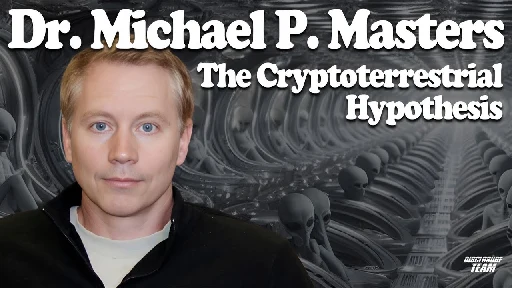
YouTube Video
Click to view this content.
Disclosure Team
